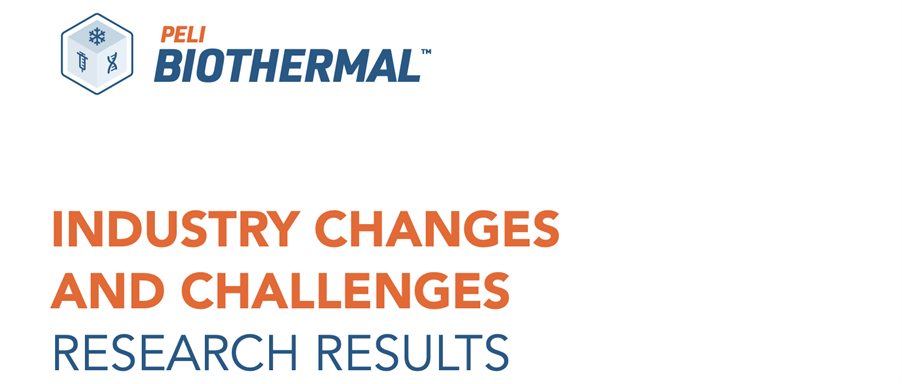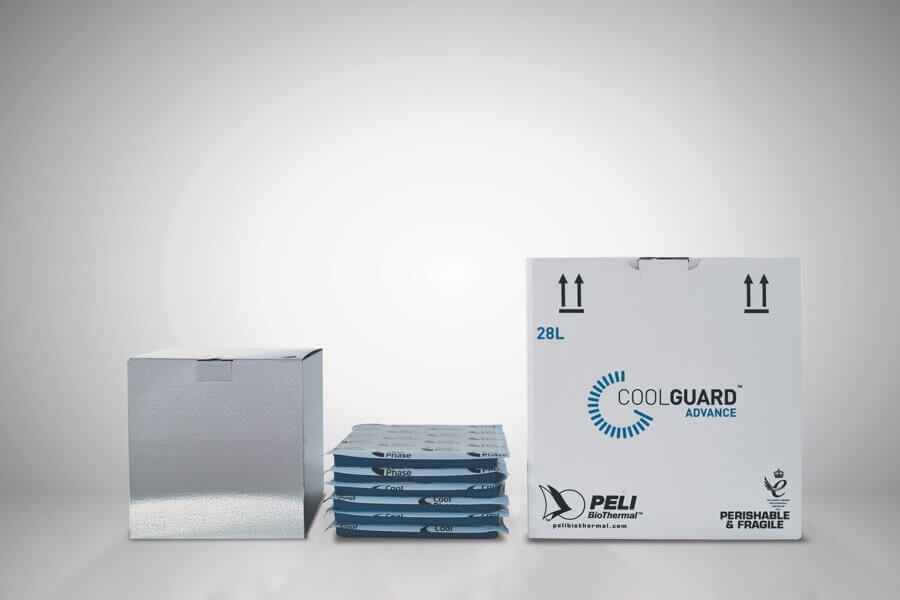
Since the start of the COVID-19 Pandemic, many industries and businesses alike have faced challenging and uncertain times which have consequently changed the future for all involved. These challenges are still prevalent today and will no doubt have a long-standing impact on the logistics industry for years to come. Whilst these challenges are still present in the logistics industry, many other factors are at play as a result of other global factors that have since arisen.
The logistics industry has undergone significant changes and faced unprecedented challenges over the past few years. To better understand the current state of the industry and its future prospects, Peli BioThermal conducted a comprehensive survey in collaboration with a leading industry publication. This blog summarises the key findings from the Logistics Survey Report, highlighting important insights on finances, global challenges, and the role of technology in shaping the industry. Additionally, we will showcase Peli BioThermal’s temperature-controlled packaging solutions, which are essential for the logistics sector.
The Key Challenges
As part of the Industry Changes and Challenges – Research Results November 2022 (2023) report, a wide range of challenges were established that continue to be problematic for businesses in 2023. Of the data collected through a survey of their readers, it was established that the increased costs of transportation were the biggest challenge currently facing the logistics industry. This is perhaps unsurprising given the increased costs associated with transportation with factors such as the cost of fuel, packaging and transportation management all rising exponentially as part of the cost of living crisis. Other notable challenges include capacity shortages, disruption to supply chains, temperature excursions, staff shortages and equipment shortages.
The Current Solutions
In response to the key challenges identified, readers were asked how they are currently managing the increased costs associated with global transportation. The main solution that businesses have implemented is essentially increased efficiency in how they source their suppliers. Businesses are shopping around for better deals more than ever before which, when done in large amounts, can help to push more downward pressure on the factors promoting increased cots. Inevitably, as seen within the majority of industries, companies have also been required to pass on extra costs to their customers. Other solutions being utilised by some of the readers surveyed included utilising lower-cost quality transport providers, considering longer and less expensive routes, utilising sea freight, organisational change and cheaper or reduced quality equipment.
Financial Considerations
The survey reveals that temperature-controlled packaging is meeting the demands of 27% of organisations, demonstrating its effectiveness in ensuring product integrity. Respondents highlighted the significance of tracking capabilities in reducing risk, even though it may come at a premium cost. Longer validation timelines were suggested as a potential solution to mitigate delays caused by airlines, customs, and freight carriers. The advancements in temperature-predictive technology and packaging innovations, such as phase change materials, offer promising prospects for improving end-to-end routing and product resilience.
Technology and Future Trends
Over half of the respondents have leveraged technology to enhance their operations and improve customer relationships. Tracking emerged as the most beneficial technology, followed by monitoring, online booking portals, and community systems for data sharing. These digitalisation efforts have proven successful in increasing response times, improving service quality, and enhancing overall visibility. The survey indicates that technology will continue to evolve, providing transport companies and customers with more accurate and detailed information. This will enable better risk management and efficiency across supply chains. Predicted future developments include advancements in scanning technology, integration with government systems for streamlined compliance, and active temperature logging for precise reporting and control.
Industry Structure and Innovations
Respondents foresee changes in the industry structure, including near-shoring and a consolidation of the supplier base. The onshoring of industries like microchip production contributes to this shift towards regional services. The survey also hints at potential innovations in cold chain packaging, such as reusable and recyclable solutions. Peli BioThermal’s range of temperature-controlled, thermally-protected packaging aligns with these emerging trends. Their products offer reliable and cost-effective solutions for pharmaceutical companies and organisations seeking to enhance their cold chains.
Tracking and Monitoring
Technological improvement will be essential in moving towards more efficient tracking and monitoring in temperature-controlled packaging and transit. As part of the Industry Changes and Challenges – Research Results November 2022 (2023) report, the data collected suggested that technology played a fundamental role in how businesses increased the efficiency of their services. Notably, the two biggest aspects that readers pointed to when discussing the improvements come in the name of tracking and monitoring. When considering readers’ responses, the general trend established as a result of their projections suggested that technology will continue to improve within the tracking and monitoring area over the coming years which will lead to more accurate information for all stakeholders within the transportation chain. As a result of this improved data and information, a more efficient and overall improved service can be delivered which will result in increased risk management, more efficient temperature control and shorter turnaround times on overall transit.
Thermal Packaging
Whilst it is clear that many challenges are still facing the industry of logistics as a whole, the Industry Changes and Challenges – Research Results November 2022 (2023) report did establish that temperature-controlled packaging demand is being met for companies. Where over half of the readers who answered the survey provided an applicable answer, it was suggested that 27% of companies were having their needs fully met, whilst 33% were finding their needs being partially met. When asked to elaborate on why their needs were being fully met, one reader suggested that tracking is one of the most important aspects in ensuring their required service needs were met. They suggested that despite the increased cost of tracking as part of temperature-controlled packing, they were happy to pay this as it was essential for their business needs.
Peli BioThermal Product Showcase
Peli BioThermal provide a wide range of temperature-controlled packaging and service solutions for the global life sciences industry. Their offerings include single-use and reusable packaging options that ensure product quality, reduce packaging costs, and mitigate excursion rates. Two notable products from their portfolio are the PELI BioThermal CoolGuard and CoolGuard PCM. These solutions play a crucial role in maintaining temperature stability and protecting sensitive shipments during transit.
In addition to their commitment to providing cutting-edge packaging solutions, Peli BioThermal takes pride in offering exceptional customer service and support. Their team of experts is dedicated to assisting logistics businesses in selecting the most suitable packaging options and implementing best practices.
One of the featured products is the PELI BioThermal CoolGuard, a reliable temperature-controlled packaging solution designed to meet the stringent requirements of the life sciences industry. It provides superior insulation and temperature stability, ensuring that sensitive products remain protected throughout their journey. The CoolGuard is available in various sizes, catering to different shipment volumes and requirements.

Another notable product is the CoolGuard PCM (Phase Change Material), which offers advanced temperature control capabilities. With its ability to absorb and release heat, this innovative solution maintains a consistent temperature range for an extended duration, even in challenging environmental conditions. The CoolGuard PCM is a valuable asset for transporting temperature-sensitive products that require precise temperature maintenance.
As the logistics industry continues to evolve, Peli BioThermal remains at the forefront of innovation. Their dedication to research and development ensures that their packaging solutions stay ahead of the curve, providing logistics businesses with the tools they need to thrive in a rapidly changing landscape.
Bottom Line
The Logistics Survey Report by Peli BioThermal sheds light on the challenges and opportunities within the logistics industry. Financial considerations, technology advancements, and changes in industry structure are key areas of focus. As logistics professionals strive to navigate the evolving landscape, Peli BioThermal’s temperature-controlled packaging solutions offer reliable and innovative options for safeguarding product integrity and optimising supply chains. By embracing these advancements, logistics businesses can position themselves for success in an increasingly complex and competitive environment.
To learn more about Peli BioThermal’s temperature-controlled packaging products and explore their extensive range, you can visit their website at coldchainpacking.com. Cold Chain Packing & Logistics offer detailed information about each product, including specifications and usage guidelines.